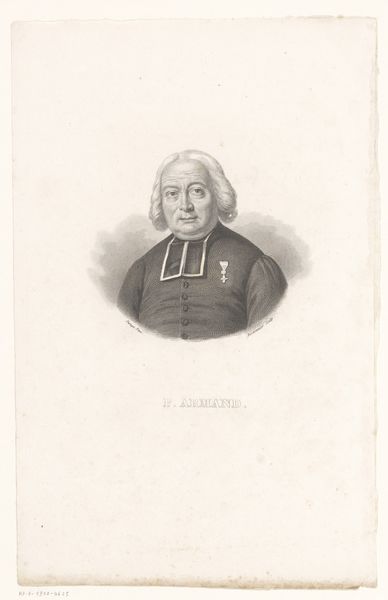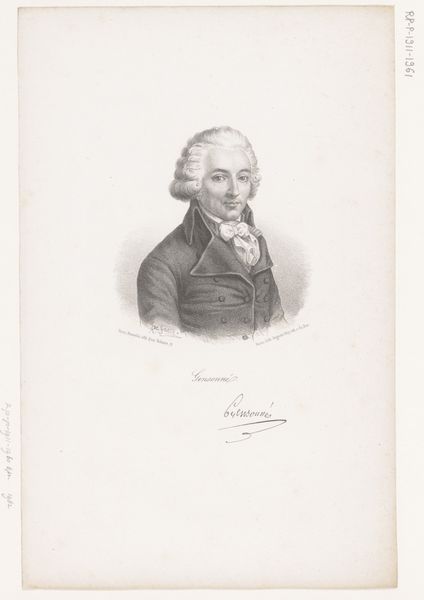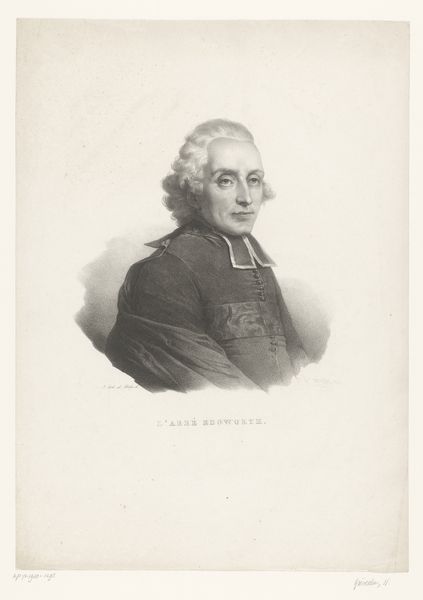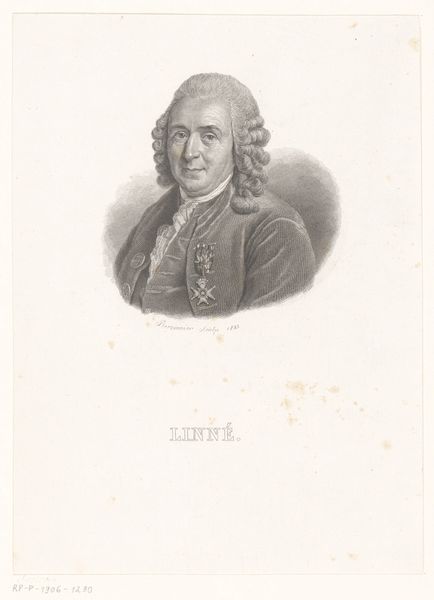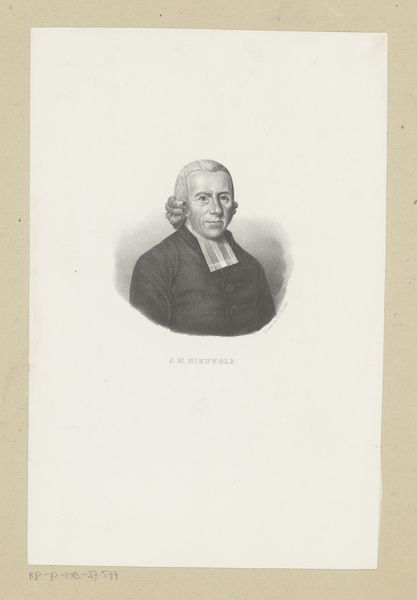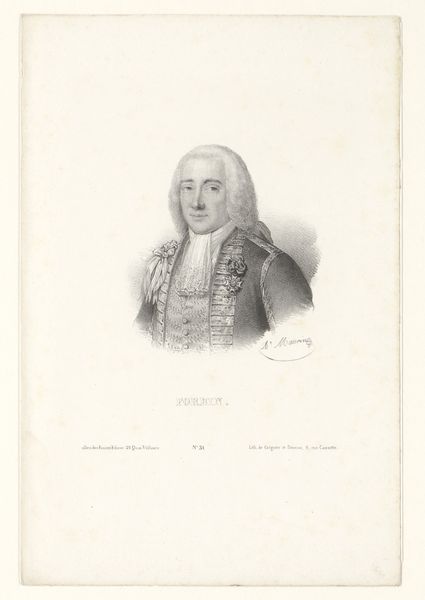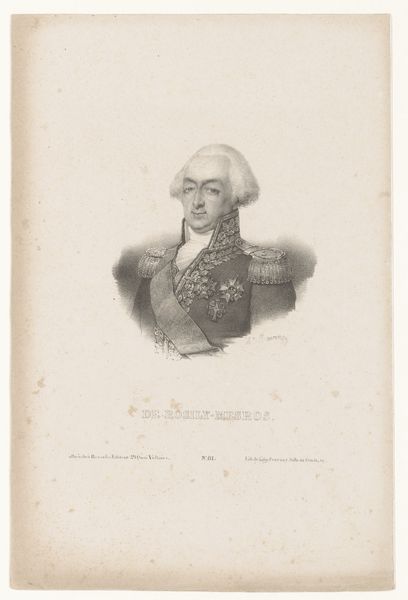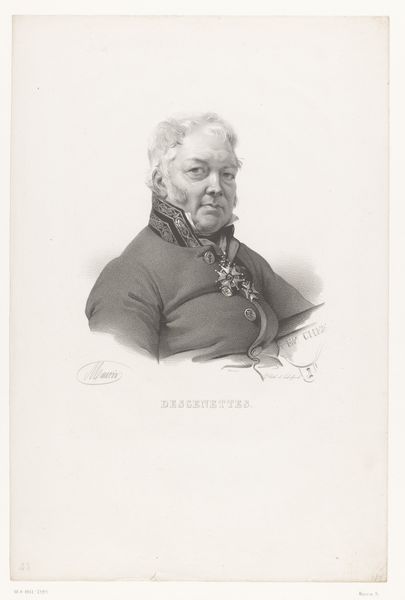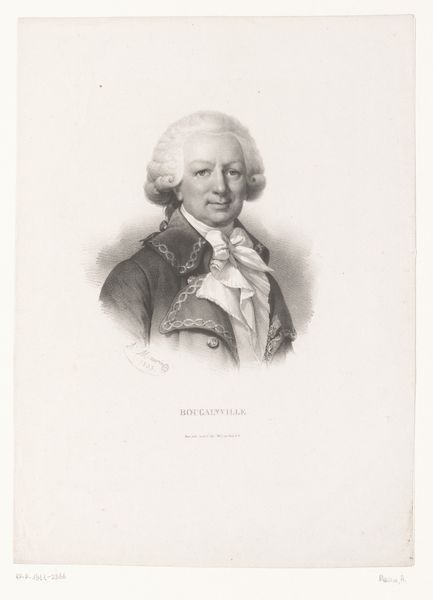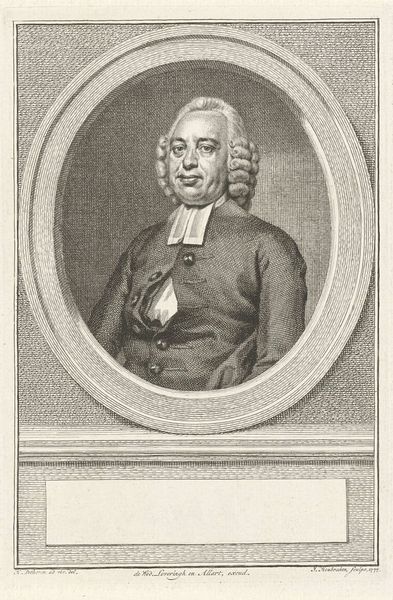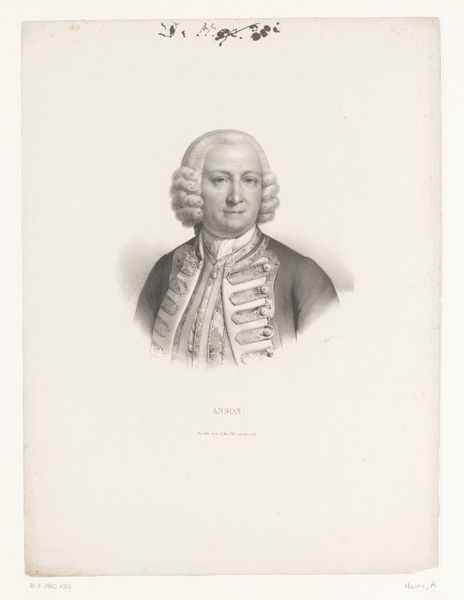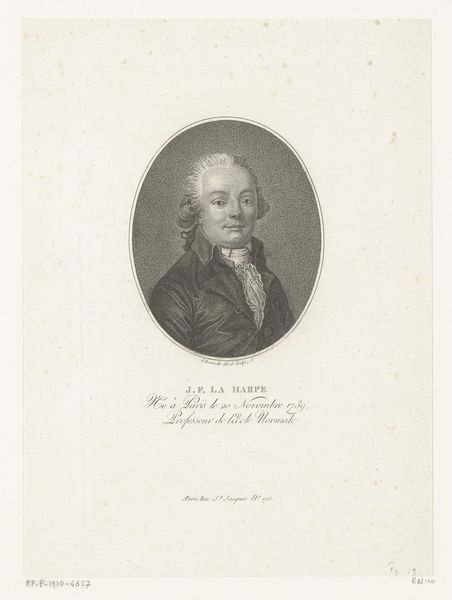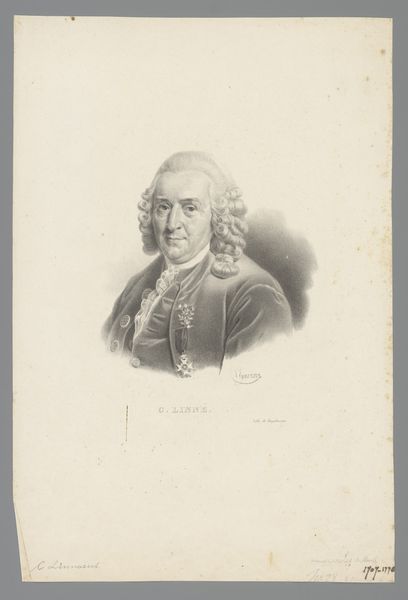
drawing, print, engraving
#
portrait
#
drawing
#
neoclacissism
# print
#
old engraving style
#
pencil drawing
#
academic-art
#
engraving
Dimensions: height 241 mm, width 145 mm
Copyright: Rijks Museum: Open Domain
Curator: Let's discuss this striking portrait. We have here "Portret van Jean-Rodolphe Perronet," a work created between 1793 and 1848 by François Jacques Dequevauviller. It’s an engraving, giving it that distinctive linear quality. Editor: Immediately, I’m struck by the precision and the restrained palette. The use of line creates subtle gradations of light and shadow that model the figure. It exudes an almost academic severity. Curator: Indeed. Dequevauviller was working within the Neoclassical movement, a period characterized by a renewed interest in classical antiquity. This is clearly reflected in the portrait’s emphasis on order, reason, and a certain idealized representation of the subject. Perronet, of course, was a significant figure in his own right, a celebrated bridge builder. Editor: The engraver’s lines are used so effectively to capture the textures, the stiff formality of his clothing, even the curl of his wig. The gaze is direct and unwavering. Do you see a semiotic relationship here between bridge builder and steadfast persona? Curator: Undoubtedly. The portrait’s creation should be regarded as an element of constructing national infrastructure. Visual depictions were used to forge connections to engineers. Perronet, in essence, embodied the era’s aspirations of engineering triumph. The image circulated widely as an element in solidifying engineering's cultural authority. Editor: I wonder about the social impact of distributing this engraved image during such politically turbulent times. Wouldn’t the image also contribute towards his legacy? Curator: Most definitely. Perronet's position guaranteed him enduring visual remembrance, as he has become an important figure in not just architectural history, but a touchstone for the French identity during his life and afterward. Editor: Seeing how Dequevauviller captures the precision in Perronet’s portrait allows us to appreciate both the artistry of the engraving, but also a sense of 18th-century visual and artistic ideals. Curator: Absolutely, this engraving operates as both a remarkable historical document and also an engaging work of art. It allows us to ponder engineering feats that helped to modernize France while simultaneously solidifying Neoclassical ideals.
Comments
No comments
Be the first to comment and join the conversation on the ultimate creative platform.
